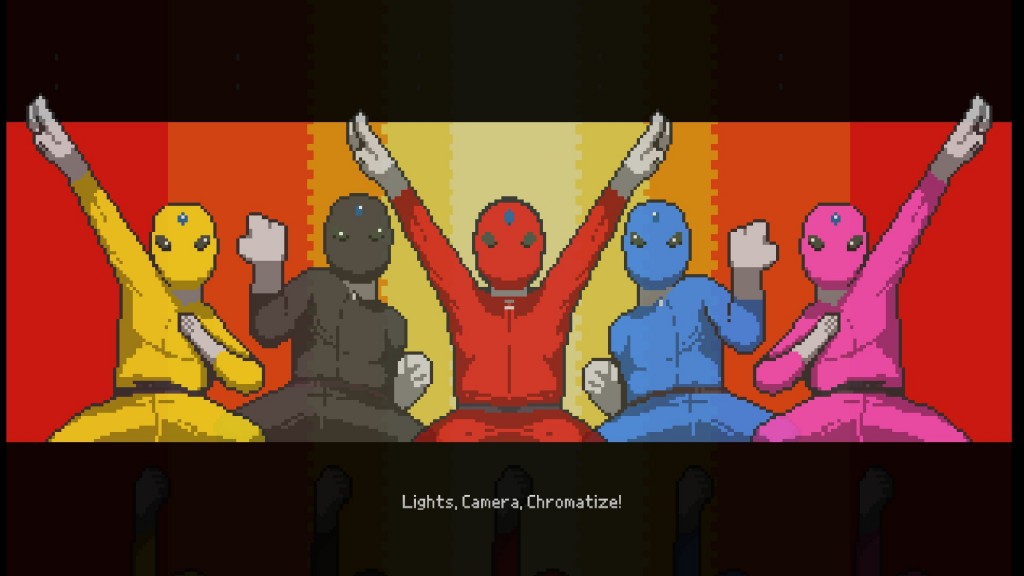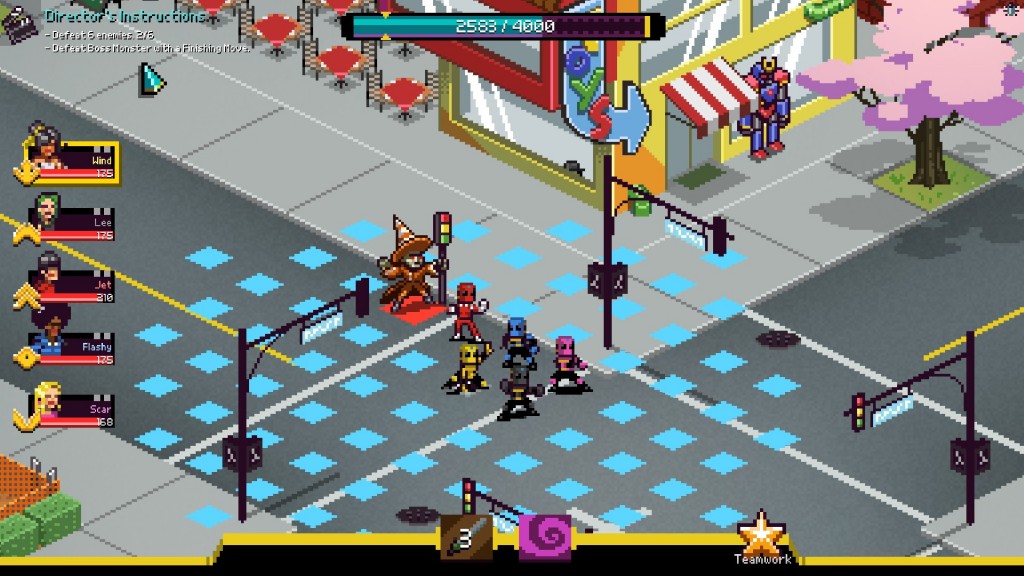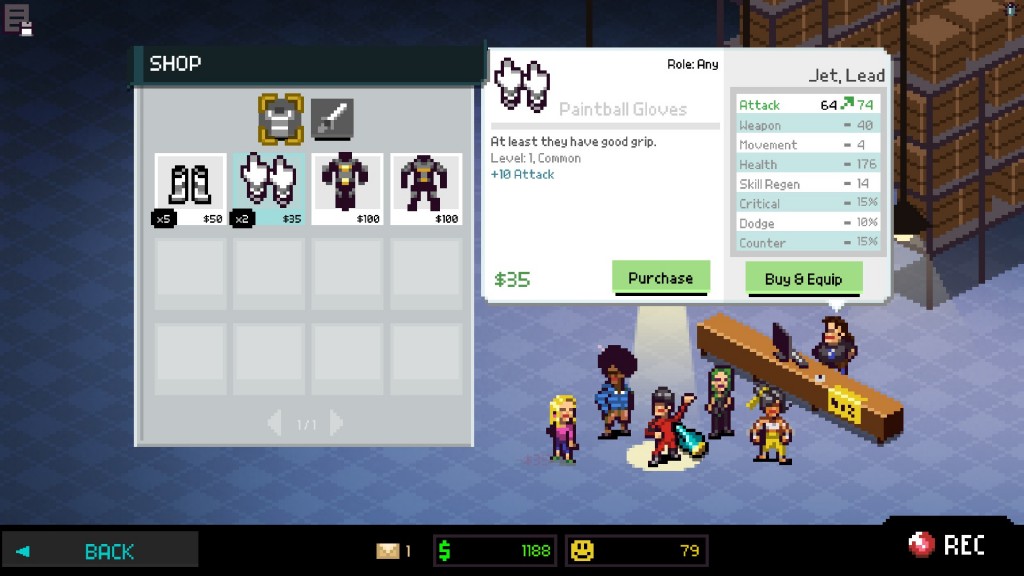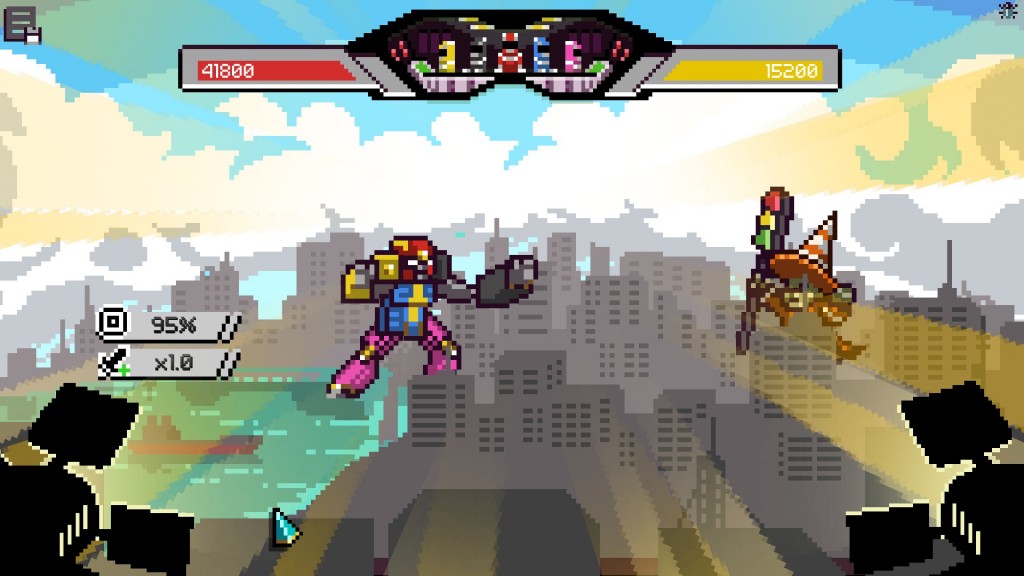
Power Rangers was great. Well, it was great to me when I was a kid. Looking back at it, every episode followed the same general outline: head bad guy orders this week’s adversary around, adversary terrorizes city, rangers fight low-level mooks and adversary at normal size and win, and rangers mash their robots together to fight giant-sized adversary and win. And honestly, at 10, that was enough for me.
In a video game, particularly a tactical RPG, it’s not enough. Instead of sticking too close to the sentai formula (as I know it) of five people with largely interchangeable powers fighting the same guy in a different suit every time, there are customization options available, and each member of the Chroma Squad, as I’ve kitted them out, feels different from the rest. My techie can punch and kick with the best of them, but he can also shoot a rifle when his movement range isn’t quite enough to get there. My lead carries a sword, because I want the head of the Chroma Squad to be a front-line fighter. Other squaddies can stun enemies or pull them in close with a lasso. It evokes XCOM a little bit, in that every member of my squad could use the rifle but only the assault gets to carry a shotgun.

The Chroma Squad aren’t just heroes; they’re actors. Outside of battle, you take on the role of the showrunner. You can craft weapons and armor out of items like cotton balls and duct tape dropped by enemies in battle. Being short on two-by-fours to make a mecha drill arm prop and needing to save cash to buy a better green screen are great touches that serve to build the world. You can hire an advertising agency to pull in more audience to make more money. You can also respond to fan email resulting in special inventory items; my lead wore armor for a long time that was originally designed for a cat and I received through one email exchange. Each mission is an episode of the show, and completing all episodes wraps up the season which unlocks new items and abilities in the shop.
Episodes aren’t just the in-universe name for missions, either. Each episode features special instructions from the director. These instructions will help to create excitement on-screen and create more fans, so it’s worth it to ensure that you follow them. This can mean taking down the villain with a five-person team-up attack, defeating all three ranged mooks within four turns or using teamwork mobility four times.

That mobility solves a problem that I’ve had with many tactics games. I hate moving forward, being out of range of enemies and ending my turn feeling like I haven’t really accomplished anything. Now I can move a member of Chroma Squad forward, put him into teamwork mode and then run another member up to be thrown into the air for a movement range boost.
After the tactics fight is done at normal size, you may find yourself in control of the Chroma Squad’s mecha. Here the battle feels like a Mario & Luigi fight. You start by throwing standard punches. As you continue to punch, your damage multiplier increases and your accuracy decreases. At any time you can finish your attack streak with a power move or bail out to defend with some health regeneration. When it is your turn on defense, timed mouse button presses will allow you to block more damage.
I never really felt in danger during a mecha fight, but I don’t think I was supposed to. Just like the sentai shows that serve as Chroma Squad’s inspiration, the mecha fight is the reward for making it through the preceding fight. I never thought the Power Rangers would lose once the Megazord came out; I knew it was butt-kicking and explosions time, and that’s exactly what I get from the mecha sections here.

Chroma Squad isn’t the hardest game available, and Power Rangers didn’t have the deepest plots and in-depth characters. Chroma Squad is fun, though, and marries a tactical RPG to a business simulation in a very satisfying way without being too much of either.
Pros: Characters feel unique, aesthetic is great, teamwork moves are fun and useful
Cons: Selecting tiles is sometimes finicky, not the challenge vets might be looking for



















